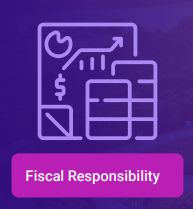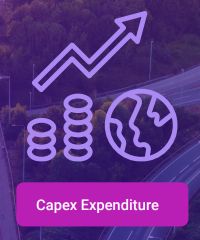Government Policy for the Decade 2014-24
As the Indian government led by Prime Minister Narendra Modi completes one decade, we take this opportunity to look back at some of the key developments, policies introduced, and reforms undertaken during this time and analyze the impact of these changes on the nation.
Over the last decade, financial inclusion of the common man has increased by 12 times through the introduction of RuPay cards and bank accounts to all with the PM Jan Dhan Yojna (PMJDY) scheme playing a significant role in financial inclusion while reducing poverty.
The introduction of policies such as the Black Money Law and the Insolvency and Bankruptcy Code 2015 along with the Demonetization in 2016 have been positive steps in the right direction. However, there is still a considerable amount to be achieved to yield the fruits of these steps and help the nation achieve the goal of being a developed country by 2047.
GST, termed as 'One Nation, One Tax', which replaced multiple erstwhile indirect taxes, has seen a remarkable increase in average monthly collections from INR 82,000 crores (~USD 10.25 billion*) to INR 166,000 crores (~USD 20.5 billion), a 100% increase in the past six years.
2018 heralded changes in the form of health coverage amounting to approximately INR 0.5 million per family. As of now, coverage for almost 230 million of India's population has taken place under the PM Jan Aarogya Yojana (PMJAY). This is one of the world's largest state-sponsored health plans.
The combination of reforms for education and health combo will bolster the social welfare of the nation, supplementing higher economic productivity.
The government's initiative (PM-Kisan) to transfer INR 6,000 per annum as minimum income support to farmers has helped disburse a total of INR 60,000 crores (INR 600 billion) from INR 1,200 crores (INR 1.2 billion) in 2019, a jump of 50 times. Sending money directly to a bank account has been a key driver to plug welfare leakages.
The government's focus on infrastructure, roads, electricity, logistics, riverways, and railways has helped to enhance productivity and improve growth. Moreover, Gati Shakti (the national master plan for multi-modal connectivity) has been the engine behind this improvement, resulting in more than 1,150 major infrastructure projects being completed in the last five years.
On the science and technology front, the nation has been on the frontier of space through mission Chandrayaan-3 and Aditya-L1 targeting the exploration of the moon and the sun. The G20 Summit in 2023 hosted by India brought international inclusion with 60 Indian cities being key destinations for meetings of international delegates. This propelled both local economies and brands into the limelight on an international stage.
Conclusion
The extensive efforts by the Indian government have helped foster economic growth, sustainable development, enhancement of infrastructure, and showcased India's capabilities to the world. While there can be improvements in certain aspects, the government's intent to rapidly develop India is clearly evident with the introduction of landmark schemes, initiatives, and reforms that will help the nation rise further in the global economy.
As the country continues on its path towards development, the government has identified a few sectors and programs that will drive growth for the economy and its people. These sectors capitalize on India's current key competencies and will have a major impact on multiple other sectors in the economy.
Sunrise Sectors

The announcement of INR 1 lakh crore (USD 12.5 billion) for R&D in sunrise sectors indicates a huge commitment to science and technology, ushering an era led by science. The push toward Electric Vehicles (EVs) and rooftop solar device adoption to achieve netzero emissions by 2070 is crucial to the government's vision of clean air, clean water, clean soil, and clean food for all. Introducing more electric buses is also part of the comprehensive clean energy plan to monetize technology and environment together. The solar rooftop support of INR 10,000 crores (USD 1.25 billion) will help more than 10 million families. It is expected to provide 300 units of free electricity per family per month (with savings of INR 18,000 per family per month). Our installed solar capacity stands at 72 GW, an increase of two times in four years.

The IMF predicted that 40% of global jobs could be impacted by AI.
1,600 Indian Global Capability Centers (GCCs) are focusing on AI,
R&D, Innovation, Analytics, Cloud Computing, and Cyber
Security. Moreover, with a market size of more than USD 50 billion,
AI can positively transform the country. The R&D budget of INR
1 lakh crore (USD 12.5 billion) could propel AI to the next state
of evolution, while keeping prudence in mind as warned by the Prime
Minister. The disbursement of interest-free loans to enhance
technology is a clear push by the government which could also help
the biotechnology industry and enhance the nation's growing
dominance in healthcare.

The provision to give interest-free loans to states to promote
tourism will be helpful to the hospitality and infrastructure
industry.

Seeing the fiscal deficit continuously decrease to 5.1% of GDP
currently from 9% a few years back is a promising, responsible
approach. However, borrowing for growth is a bigger challenge. With
higher GST inflows, gross borrowings in the future will likely be
reduced. Similarly, India's efficiency in handling its crude
oil imports/exports can help reduce the current account deficit,
making more funds available for growth on less borrowings.

The allocation of a 40% increase in the budget for capital
expenditure (capex) is a good sign. Although it currently only
stands at 3.4% of the nation's GDP, in absolute terms, the
present value amounts to INR 11.1 lakh crore (USD 138 billion), a
significant amount.

PM Mudra Yogna, which provides loans to entrepreneurs for skilling
initiatives, is expected to enhance productivity and economic
growth for the nation on a sustainable basis.
Conclusion
The focus of the interim budget on research and development with enhancement of capital expenditure with a continuous decline in fiscal deficit is the right indication towards government focus on growth rather than a normal populist pre-election budget.
The content of this article is intended to provide a general guide to the subject matter. Specialist advice should be sought about your specific circumstances.
